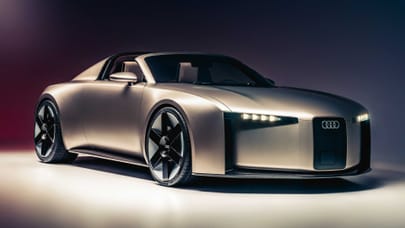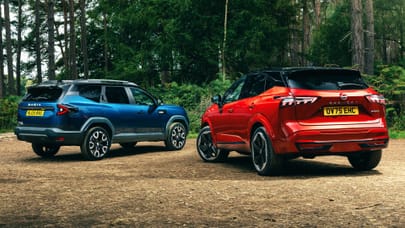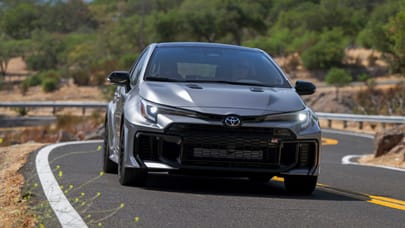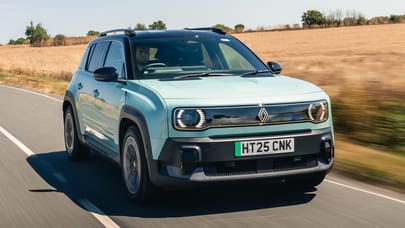
Trump's US car tariffs: what do they actually mean and how will they work?
Following the US President's application of a 25 per cent tariff, Top Gear explains what that could look like
Despite President Trump's campaign promise to impose heavy tariffs on foreign goods including cars, there has been widespread surprise – indeed shock – that he has gone ahead and done exactly that.
From now, foreign cars sold in the US are subject to a 25 per cent tariff. From 3 May, foreign parts, mostly used in American car factories to make American cars, will also be hit to the same extent.
The President promises things will later get better for ordinary Americans. But the immediate impact of the tariffs will be that most cars will get more expensive in America. A tariff is simply a sales tax on imported goods.
Some 45 per cent of the cars and light trucks sold in the US are imported and many of the rest use significant numbers of imported parts or even whole powertrains. That's not just the foreign-branded names; around 45 per cent of GM's vehicles are foreign, mostly coming from Canada, Mexico and South Korea.
In 2024, just over one million Canadian-made vehicles were sold in the US and 2.5 million Mexican, compared with 2.7 million Japanese and Korean, and 0.9 million European, according to S&P.
During Donald Trump's previous presidency an agreement was signed covering trade across the North America region: the US Mexico Canada Agreement. (It came into effect in the early months of the Biden term.) It allowed for free trade between the countries, but with quotas for vehicle production, designed to protect US assembly-line jobs.
So at that point President Trump seemed satisfied, and the manufacturers could continue building cars with Canadian and Mexican parts in their US plants, and cars with US components in their plants in Canada and Mexico. Now he has in effect torn up his own agreement.
It's not just that many cars will get dearer. Many more will simply become unavailable if their makers can't figure out a way of making money on them in this complex and reconfigured landscape. For sure, it will take manufacturers months or years to realign supply chains to increase US content.
This handy US Government publication lists the origin by percentage of parts in all cars sold in the US, and almost none of them have 100 per cent local content. Indeed some of the highest local content figures are for models made by the Japanese and Korean brands in their US plants. BMW and Mercedes make huge numbers of SUVs in America, but fitted with European powertrains.
The rules say the tariff is determined once the car is finished, rather than seeing tariffs applied each time components cross and re-cross a border on the way to being bolted into a finished car. So a car that's built abroad but with 20 per cent US content will have the tariff on 80 per cent of its price.
Looking for more from the USA?
Top Gear
Newsletter
Thank you for subscribing to our newsletter. Look out for your regular round-up of news, reviews and offers in your inbox.
Get all the latest news, reviews and exclusives, direct to your inbox.
To disentangle this and substitute parts made in the US will take months or years. Shifting car assembly to the US in existing plants will be just as lengthy a process. As for building entire new factories, well that's an endeavour that takes years of planning and construction.
Any manufacturer that now starts exploring the feasibility of a new plant in the US, planning and locating it, building and fitting it out, will hardly have cars to sell by the time President Trump's term is over. Also it's expensive – not only the cost of building each new US plant, but of running the original foreign ones at low capacity, or closing them.
President Trump's regulations can appear surprising and chaotic. That's not a criticism: it's his overt strategy to unsettle political opponents. But here's a paradox. He has said the tariffs are in part a shock tactic to hasten trade negotiations with countries he thinks have barriers to US goods. But if the tariffs aren't permanent, why would manufacturers invest in new plants in the US?
The President has boasted that car plants are ‘being built at levels we’ve never seen’, but actually there are no new plants going up at the moment, just a few re-jigging of plants already there. Only Hyundai so far has explicitly said it will invest in new US production because of tariffs, but detail is scant and part of that investment is in expanding existing new plants, and in a possible steel plant to supply them.
In any case, the current President's predecessor also enacted measures to try to shift car production to the US. Joe Biden's lever was to give out tax breaks on electric cars, but only American-made ones.
So for the moment, chaos reigns. When Top Gear phoned manufacturers on the week of the announcement, none had much to say because they haven't figured out how much of the tariff they'll pass on.
Some manufacturers have decided that for the moment they'll simply pause shipping to the US altogether. So buyers will have to wait longer for a Land Rover or, reportedly, a VW. After all, JLR can't just stick the 25 per cent charge on top of, say, a $100,000 Range Rover Velar, and then a few weeks later decide to adjust the spec or cut margins to reduce the sticker from that $125k to say $110k. People who'd bought at the peak price would be understandably furious at the collapsed residual of their car.
Car companies don't want to reveal their possible tactics for changing prices or models in the US. They want to get a sense of what their rivals do. They want the tariff situation to stabilise. It's possible the collapse in share prices that followed the tariff announcement will spook the small investors and pension-fund holders who make up much of President Trump's home support base. Then he might blink. It's possible a global trade war would become too bruising for everyone.
No-one really knows how car sales in the US and the car business around the world will look in even a few weeks' time.
Trending this week
- Car Review
BMW iX3








